While I don’t allow the numerous enthusiastic and complimentary comments on these posts to influence me too much, I admit that they’re a boost to my ego, and then something like this happens to bring me back into perspective. I present to you an image from early yesterday afternoon, once again on Walkabout Estates.
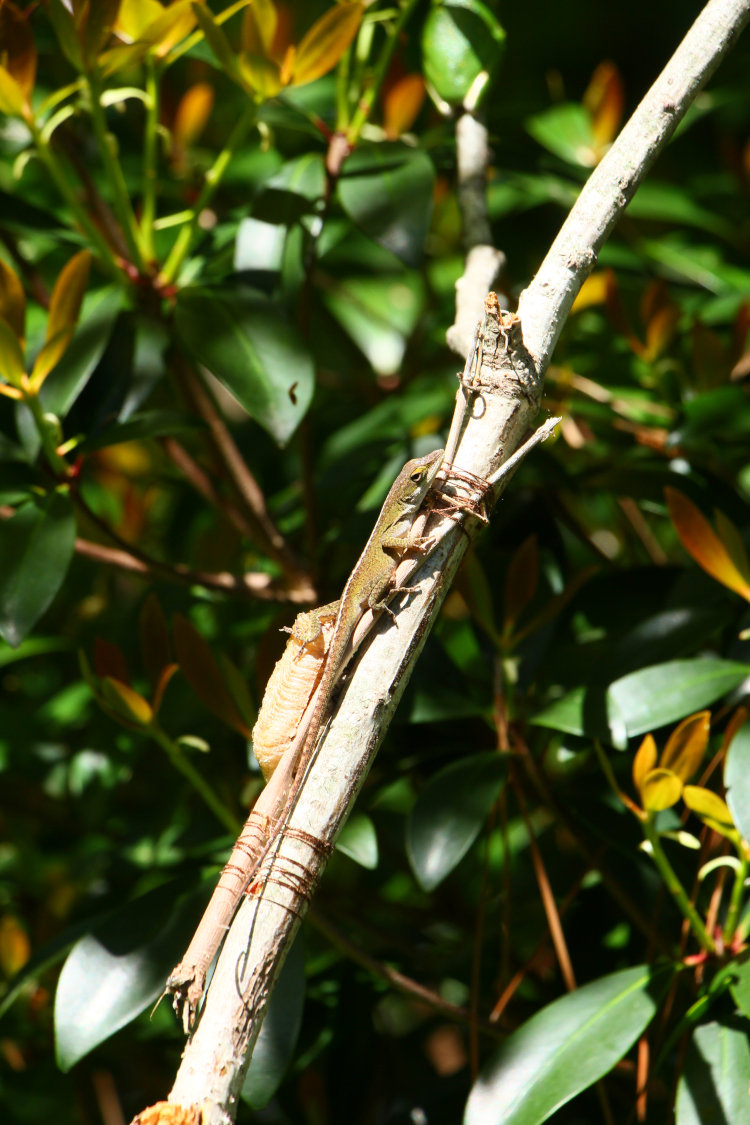
I was delighted to see this guy, because this is the first appearance of one of the small, juvenile Carolina anoles (Anolis carolinensis) from last year; true to pattern, they seem to come out a bit later than the full-grown adults do. I know there’s nothing useful for scale here, and this guy was already spooky enough that trying to introduce anything would have prevented any photos at all. But we have still something that we can use, and that’s the mantis egg case/ootheca attached to that branch, right underneath its left hind leg; this is one of the oothecas that I placed this year, and you can see the original smaller stick that it came with as well as the thread that I used to affix this to the branch (which was also placed.) I measured that after the fact, and the ootheca is 35mm in length. That places our subject here at roughly 90mm including that long tail, but the body itself is scarcely longer than the egg case. This isn’t as small as some of the ones I was seeing last year, but it’s less than half adult size, so definitely a juvenile. I did three frames and then left it alone.
Returning home later in the afternoon, I checked back on the odd chance that it was still hanging around in the area, and found something else:
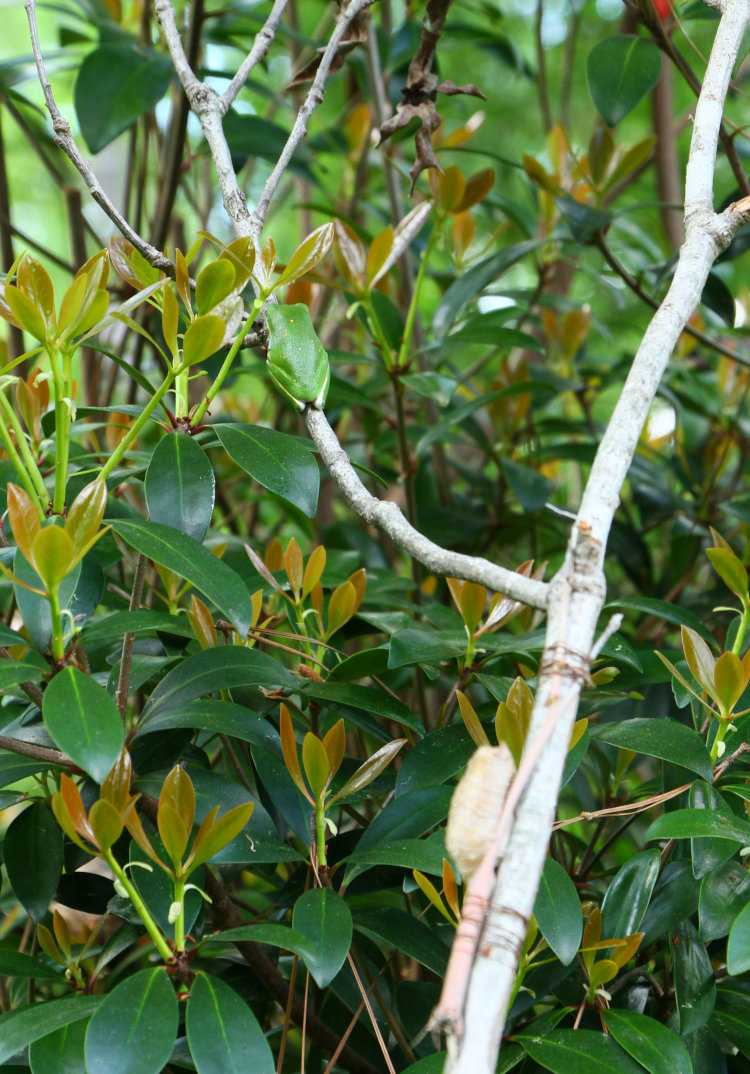
Yep, there’s a green treefrog (Dryophytes cinereus) perched on a fork of the same branch, and they tend to stay put all through the daylight hours. That would mean that I missed it entirely while standing there photographing the anole, and sure enough, it’s visible in the first pic above. This does not make me feel proud of my powers of observation.
In between those two frames, however, I did a quick stop at the NC Botanical Garden, doing some fartsy pics of a few flowers, but mostly seeing how many reptiles I could spot – there were a handful, though of course, how many I missed is now definitely in question.
It’s not like this one was hard to see:
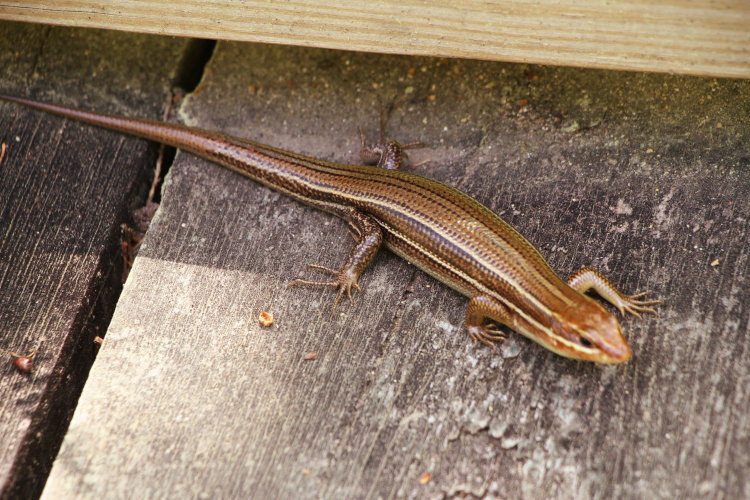
This is a pregnant female American five-lined skink (Plestiodon fasciatus) – probably. There is also a southeastern five-lined skink which is pretty much identical, except the adults often have more orangey heads in breeding season. And this one is quite heavy, so the chances are (at this time of year anyway) that it’s a pregnant female, though the girth is not the same as the likely pregnant anole seen earlier. So much of this information is suspect, but how badly do you need to know? All right then.
However, it was out basking on a boardwalk/bridge where both skinks and fence lizards are routinely seen, so not hard to spot if you were looking for it. I waited for someone to pass, already having snagged a few shots and fairly sure that the skink would bolt as they drew close, but it never moved, so I went in much closer myself – I’m probably just over a meter away here without any reaction. Come to think of it, maybe this is just a lawn ornament…
The next one, however, was at least marginally mobile.
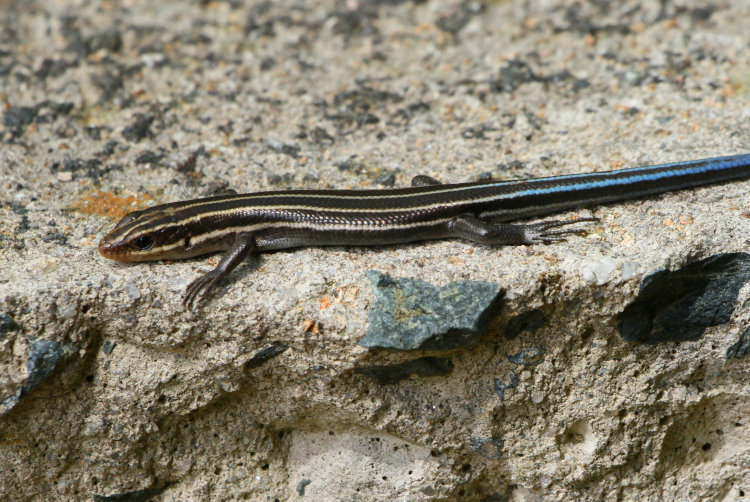
Some distance away from the other and much, much smaller, this is a juvenile, but could be either species; the way to tell is by examining the scales under the tail, so this ain’t happening with any subject photographed in situ, since they don’t tend to tan their bellies. This one stayed put briefly, then darted forward about two body lengths and paused again in uncertainty, so I know this was either a living specimen or a damn clever lawn ornament.
Now we get to the true powers of observation (he said in petulant self-defense.)
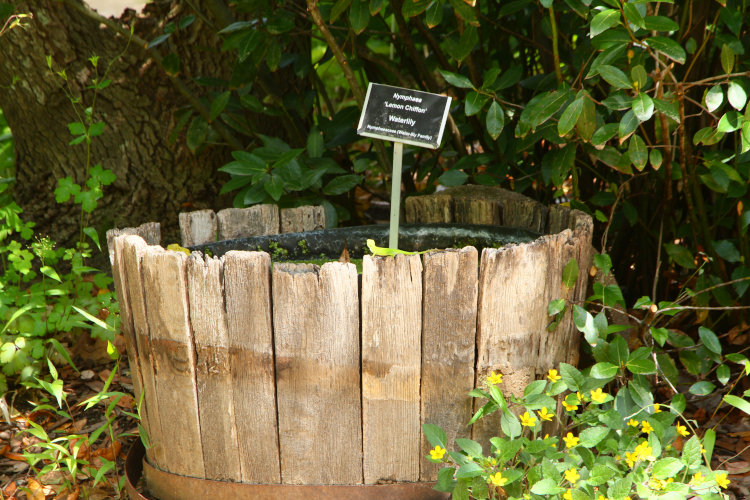
This was at 135mm, so it appears about three times closer than it was when I spotted it. Okay, fine, it’s bright green against dull grey wood with no plants nearby, so not exactly blending in, but it was still a decent distance off in a garden loaded with similarly-colored plants. Listen, just let me have my fantasies, okay?
Going in close revealed that it had likely been disputing territory with another recently.
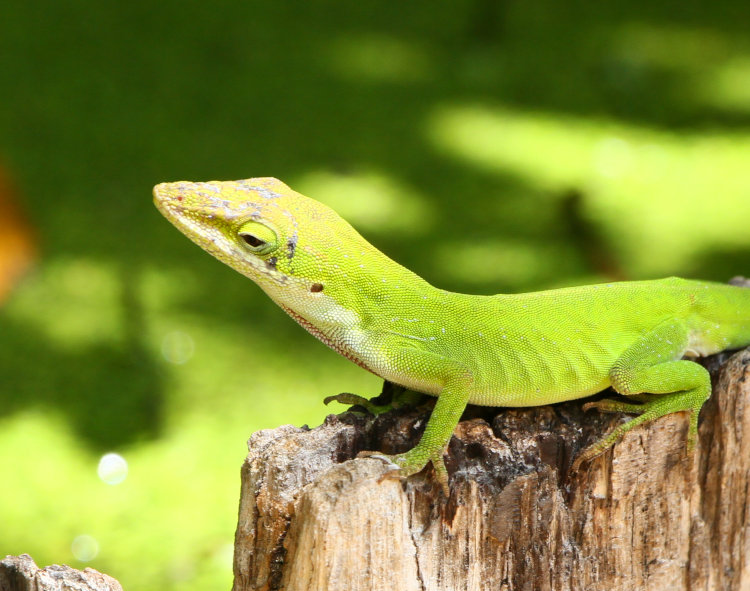
All that scarring on the head is typical of what they receive in territorial battles, and it looked reasonably fresh, and since it’s that time of the year I feel pretty comfortable in saying this – but we’ve pretty well established the level of my bona fides now, so do with it as you will. Just, you know, keep it to yourself…




















































